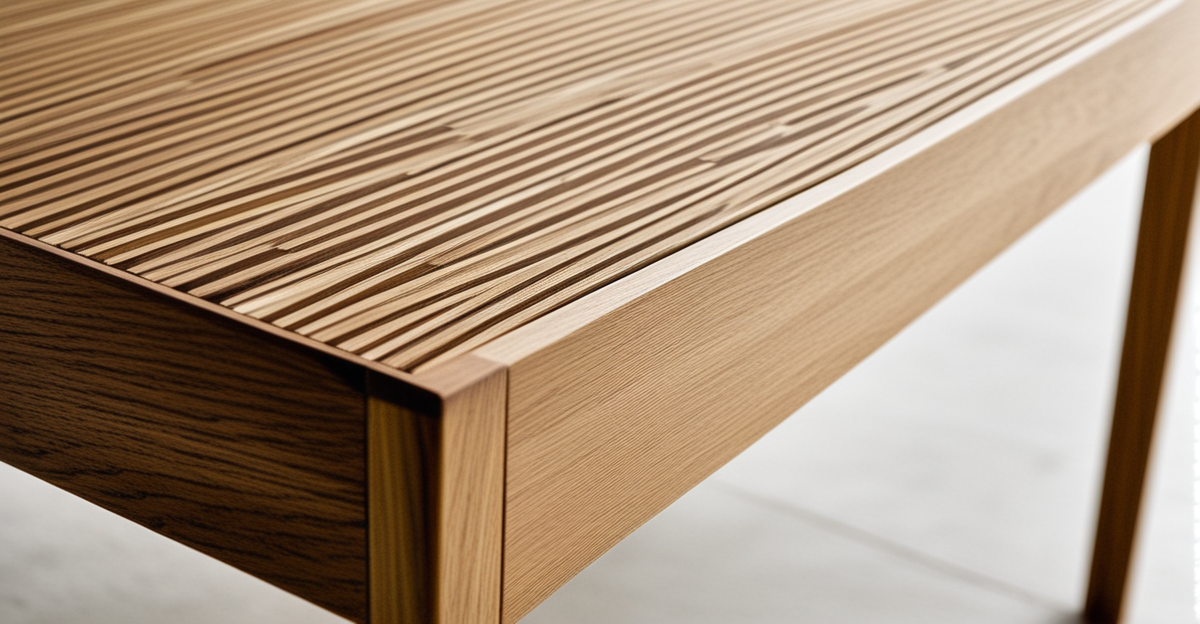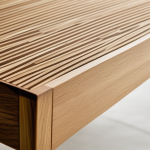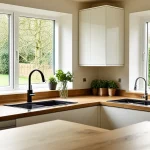Key Features of Eco-Friendly Furniture for UK Homes
Understanding what truly defines eco-friendly furniture is essential for UK homeowners aiming to make responsible choices. At its core, sustainable furniture encompasses materials, manufacturing processes, and transportation methods that minimize environmental impact. For instance, sustainable furniture features typically involve the use of renewable resources, such as reclaimed or responsibly sourced timber, which reduces deforestation. Additionally, manufacturers focus on low-energy production techniques and non-toxic finishes to ensure safer indoor environments.
UK consumers often rely on eco-certifications to verify the sustainability of furniture. Certifications like FSC (Forest Stewardship Council) and PEFC (Programme for the Endorsement of Forest Certification) assure that the wood used originates from responsibly managed forests. These labels also guarantee that ethical labor practices have been followed throughout the chain. Understanding these certifications helps consumers confidently select products that contribute to forest conservation and social responsibility.
Also to see : How Can Smart Home Devices Transform Your Daily UK Lifestyle?
UK sustainable furniture design is evolving with innovative trends aimed at reducing waste and enhancing longevity. Modular designs allow easy repairs or component replacements, extending the product’s useful life. Some brands incorporate recycled materials, such as metal and plastic, to reduce reliance on virgin resources. These innovations contribute to a circular economy mindset, aligning with the values driving eco-friendly furniture adoption in UK homes.
Top Eco-Friendly Furniture Brands and Products in the UK
When exploring eco-friendly furniture UK options, knowing the top sustainable furniture brands UK offers helps consumers make informed choices. These brands emphasize transparency about materials and manufacturing processes, ensuring products align with green values. Leading brands often showcase certifications like FSC or PEFC to reinforce their commitment to sustainability.
Also to discover : How Can You Transform Your UK Home Using Sustainable Practices?
Among the best eco-friendly furniture available are items crafted from reclaimed wood, recycled metals, and organic textiles. For example, many UK companies specialize in living room and bedroom furniture that merges sustainable materials with contemporary design, offering choices that suit modern UK homes seeking both style and environmental responsibility.
Noteworthy product categories include:
- Living room pieces such as sofas with non-toxic upholstery and coffee tables made from sustainably sourced timber;
- Bedroom essentials featuring ethically produced beds with recyclable components;
- Dining furniture that employs modular designs, allowing for easy repair and longer use;
- Office furniture combining ergonomic design with eco-friendly materials.
By focusing on these sustainable offerings, consumers in the UK can enhance their homes while actively contributing to environmental conservation through their purchases.
Popular Eco-Friendly Furniture Materials and Their Benefits
Understanding eco-friendly materials is key when selecting sustainable furniture that truly benefits UK homes. One of the most valued sources is reclaimed wood, which involves repurposing timber from old structures or discarded furniture. This material reduces deforestation, lowers carbon emissions related to new timber harvesting, and adds unique character to furniture pieces. However, consumers should ensure reclaimed wood is treated safely and free from harmful chemicals.
Another crucial category is sustainable wood, typically certified by organizations like FSC or PEFC. These certifications guarantee the wood comes from responsibly managed forests where regrowth and biodiversity are preserved. Sustainable wood furniture often balances durability with environmental care, making it a preferred choice for UK consumers who want both quality and conscience in their homes.
Recycled materials are increasingly popular in eco-friendly furniture UK. Using metals reprocessed from scrap and plastics diverted from landfill reduces waste and energy consumption. For instance, recyclable textiles made from organic fibers or recycled yarns offer non-toxic and breathable upholstery alternatives, enhancing indoor air quality. Non-toxic finishes further augment furniture sustainability by minimizing volatile organic compounds (VOCs), promoting healthier living spaces.
Choosing furniture made from these eco-friendly materials supports the circular economy and helps UK homeowners reduce their ecological footprint without sacrificing style or comfort.
Key Features of Eco-Friendly Furniture for UK Homes
Eco-friendly furniture in UK homes is distinguished by several critical factors that ensure genuine sustainability. Primarily, the materials used must be renewable or responsibly sourced. This often means selecting timber certified by organizations such as FSC or PEFC, which confirm that forests are managed to maintain ecological balance and enable regrowth. Alongside materials, the manufacturing process plays a vital role; it should prioritize low energy consumption and use non-toxic substances to reduce emissions and enhance indoor air quality.
Regarding transportation, eco-friendly furniture aims to minimize its carbon footprint by sourcing materials locally when possible and optimizing distribution channels to reduce environmental impact. This holistic approach to production and delivery is a hallmark of authentic sustainable furniture features.
UK consumers frequently rely on eco-certifications as objective markers of sustainability. FSC (Forest Stewardship Council) and PEFC (Programme for the Endorsement of Forest Certification) are two of the most recognized certifications. FSC ensures wood comes from responsibly managed forests that uphold environmental, social, and economic standards. Likewise, PEFC endorses sustainable forest management globally. These labels provide UK homeowners with confidence that their furniture choices support forest conservation and ethical labor.
In recent years, UK sustainable furniture design has seen significant innovation. Notably, modular and flat-pack designs are gaining popularity, enabling easy repairs and part replacements, which increase product longevity and reduce waste. Brands now also incorporate recycled components, such as metals and plastics salvaged from waste streams, weaving circular economy principles into furniture production. These trends address common consumer concerns about style, durability, and environmental impact, making eco-friendly furniture more appealing and practical for UK homes.
Key Features of Eco-Friendly Furniture for UK Homes
Eco-friendly furniture in UK homes is defined by a comprehensive approach encompassing materials, manufacturing, and transportation. Central to truly sustainable furniture features is the use of renewable or responsibly sourced materials, such as timber certified by FSC or PEFC. These certifications confirm responsible forest management, ensuring ecological balance and protecting biodiversity, which matters greatly to UK consumers seeking accountability.
Manufacturing practices ensure minimal environmental impact by prioritizing low energy consumption and avoiding toxic chemicals. Non-toxic finishes, often VOC-free, enhance indoor air quality, aligning with health-conscious UK homeowners’ expectations. Equally important is transportation: sourcing materials locally and optimizing logistics reduce carbon footprints, directly supporting sustainable furniture features.
UK sustainable furniture design continuously evolves, embracing innovation to meet eco-friendly demands. Modular construction is a standout trend, enabling easy repairs and component replacement, significantly extending furniture lifespan. This promotes a circular economy by reducing waste and encouraging reuse. Additionally, many UK brands incorporate recycled metals and plastics into furniture production, merging style with environmental conscience. Such innovations not only satisfy the desire for attractive furnishings but also reinforce practical sustainability for UK homes.
These defining criteria—material sourcing, eco-conscious manufacturing, minimized transport impact, and forward-thinking design—combine to shape true eco-friendly furniture, empowering UK consumers to make informed, responsible purchases.
Key Features of Eco-Friendly Furniture for UK Homes
Eco-friendly furniture in UK homes is defined by rigorous sustainable furniture features centered on three main pillars: materials, manufacturing processes, and transportation. High-quality eco-friendly furniture must use renewable or responsibly sourced materials, such as timber certified by FSC or PEFC. These certifications are crucial for UK consumers because they ensure that timber originates from forests managed sustainably, protecting biodiversity and promoting forest regeneration. Such certifications also reflect broader environmental and social responsibility standards that resonate with eco-conscious buyers.
Manufacturing methods play an equally vital role; sustainable furniture features include minimizing energy consumption and avoiding toxic substances. Furniture finished with non-toxic, VOC-free coatings promotes healthier living spaces, directly addressing concerns about indoor air quality that matter in UK homes.
Transportation choices for eco-friendly furniture also impact sustainability. Reducing carbon emissions by prioritizing local sourcing and optimizing logistics chains is a key criterion. These efforts ensure that the environmental benefits of sustainable furniture are not offset by excessive shipping impacts.
In terms of design, UK trends emphasize innovation that supports durability and waste reduction. Modular designs are becoming widespread as they enable easy repairs and parts replacement, extending the furniture’s usable life and aligning with circular economy principles. Incorporating recycled materials like metals and plastics recycled from waste streams further enhances sustainability, reducing reliance on virgin resources.
Together, these sustainable furniture features—certified responsible materials, low-impact manufacturing, conscious transportation, and innovative, durable design—define what makes furniture truly eco-friendly for UK homes. They empower consumers to make choices that balance practicality, style, and environmental responsibility.










